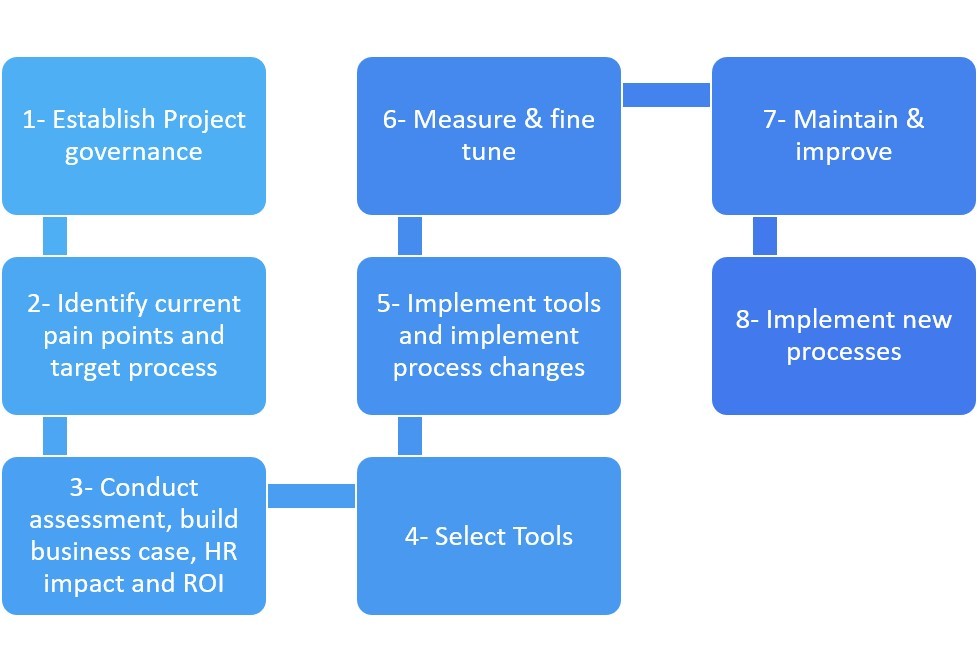What is robotic process automation?
Robotic Process Automation (RPA) aims at automating business processes, governed by business logic and structured inputs. An organization will configure software “robots” to capture and interact with existing applications for processing a transaction, manipulating data, triggering responses and communicating with other digital systems.
What are the benefits of RPA?
RPA provides organizations with the ability to reduce staffing costs and human error. The initial target is to improve the business by automating low-value tasks. For example, a Bank running 100 bots (RPA software robots) on 10 processes can handle as much as 1 million transactions per year equivalent to 140 full-time employees.


How Alphanova can Help you?
Business process Automation is in Alphanova’s genes. Our consultants are certified 6Sigma and will work with you to get a holistic view on how you can improve your business processes. Define with you phases for this improvement to insure a successful project.
The initial steps for any Business Process Automation project especially using RPA are the following:
- Assess current processes and organizational issues considering as well potential political problems.
- Create a solid business case for BPA/RPA, including developing return on investment (ROI) metrics;
- Help you select the right technology solution to meet your organization’s specific needs;
What is the effort to implement RPA?
Bots are reasonably costed although usually leased and implementation do not require custom software or complex system integration. Enterprises automation efforts can also be improved by using AI technologies to drive Bots, such as Machine Learning, speech recognition, and natural language processing, automating higher-order tasks that require the perceptual and judgment capabilities of humans.
On the other hand, RPA implementation depends heavily on the maturity and stability of business process automation in the organization. A Bot automates only existing applications and digitalized processes. An initial Business Process Automation assessment will help phase out correctly the project and decide of the level of RPA needed.
Once the RPA has been implemented, the applications on which bots interact can change. A minor change to an application form could throw off months of work in the back office on a bot.

Seems like a right fit? Get in touch with our experienced Consultants